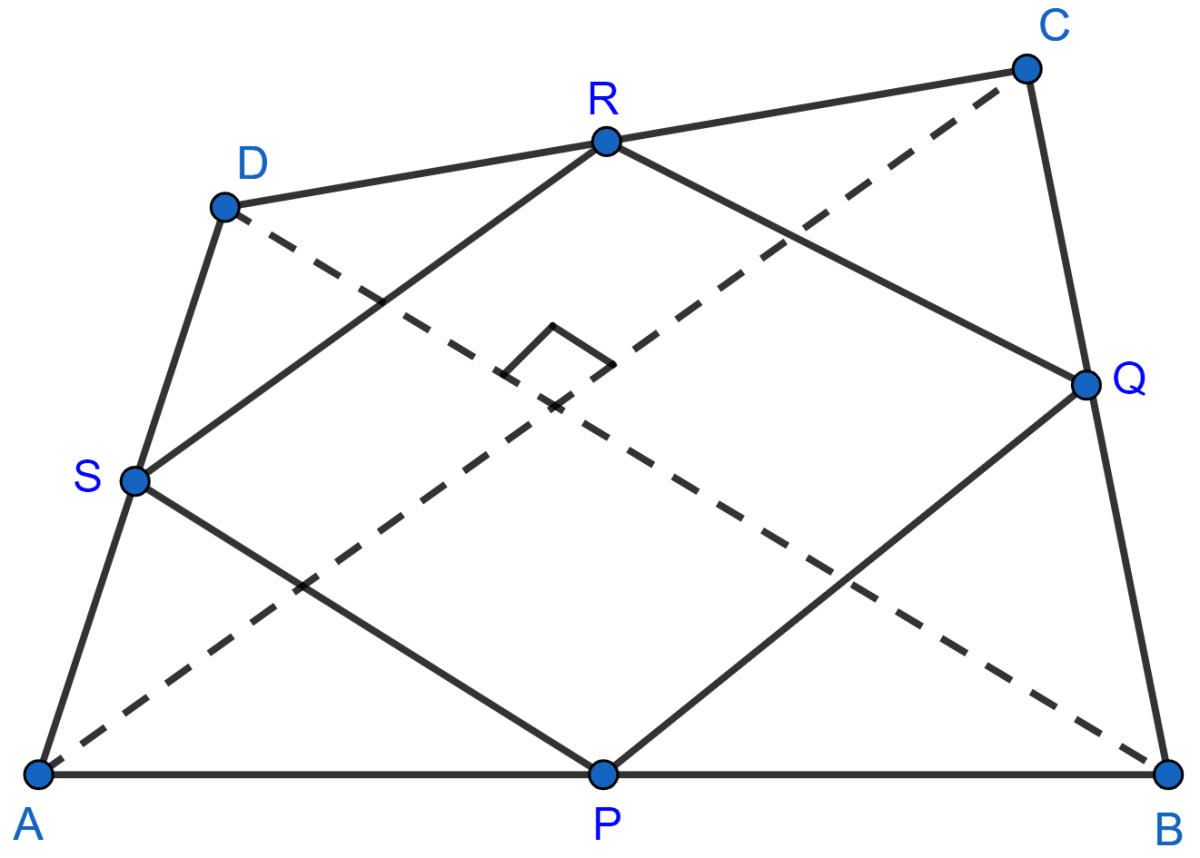Mathematics
The diagonals of a quadrilateral ABCD are perpendicular. Show that the quadrilateral formed by joining the mid-points of its adjacent sides is a rectangle.
Mid-point Theorem
17 Likes
Answer
From figure,
ABCD is a quadrilateral in which diagonals AC and BD are perpendicular to each other. P, Q, R and S are mid-points of AB, BC, CD and DA.

In △ABC,
P and Q are mid-points of AB and BC respectively,
PQ || AC and PQ = AC …….(1) (By mid-point theorem)
In △ADC,
S and R are mid-points of AD and DC respectively,
SR || AC and SR = AC ………(2) (By mid-point theorem)
Using eqn. 1 and 2 we get,
PQ || SR and PQ = SR.
So, PQRS is a parallelogram.
In △ABD,
S and P are mid-points of AD and AB respectively,
SP || BD and SP = BD ………(3) (By mid-point theorem)
Given,
AC and BD intersect at right angles,
From 3 we get,
SP || BD.
∴ SP ⊥ AC
From 2 we get,
SR || AC
∴ SP ⊥ SR i.e. ∠RSP = 90°.
∴ PQRS is a rectangle.
Hence, proved that the quadrilateral formed by joining the mid-points of its adjacent sides is a rectangle.
Answered By
9 Likes
Related Questions
The figure formed by joining the mid-points of the sides of a quadrilateral ABCD, taken in order, is a square only if
ABCD is a rhombus
diagonals of ABCD are equal
diagonals of ABCD are perpendicular to each other
diagonals of ABCD are equal and perpendicular to each other.
ABCD is a rhombus with P, Q and R as mid-points of AB, BC and CD respectively. Prove that PQ ⊥ QR.
If D, E and F are mid-points of the sides BC, CA and AB respectively of a △ABC, prove that AD and FE bisect each other.
In △ABC, D and E are mid-points of the sides AB and AC respectively. Through E, a straight line is drawn parallel to AB to meet BC at F. Prove that BDEF is a parallelogram. If AB = 8 cm and BC = 9 cm, find the perimeter of the parallelogram BDEF.